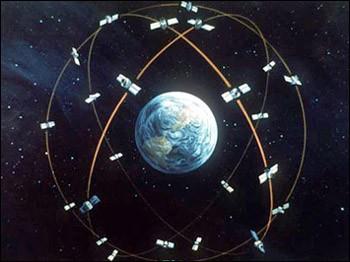High-precision spatial location technology and services developed by combining mobile devices with geographic information are gaining attention. In the future, there will be considerable potential for personal or vehicle location tracking, financial market transactions, travel guides, and entertainment information. .
At present, in the spatial positioning technology, it can be roughly divided into outdoor and indoor positioning. In the outdoor positioning technology, the global satellite positioning system is mainly used, and the absolute coordinates are mainly transmitted through the latitude and longitude of the earth. Currently, the global satellite positioning system is covered. There are four main systems, namely the US GPS system, the Russian GLONASS system, the European Galileo system and China's Beidou satellite system. These satellite systems are open to the world, so countries can develop and use multiple satellite systems simultaneously and integrate communication. Network systems or other ground base stations transmit auxiliary reference signals to increase the positioning accuracy of the device.

According to the information, in March 2017, the European Global Navigation Satellite Navigation System issued the “Global Satellite Navigation System (GNSS) Market Reportâ€, which described the new development of the GNSS market, which pointed out that the global 2017 The number of GNSS equipment used is 5.8 billion, and it is expected to reach 8 billion by 2020. With the emergence of 5G, autonomous driving, smart cities and the Internet of Things, GNSS value-added services will be diversified, and annual revenue is expected to be It reached 19.5 billion euros in 2025, which is 2.5 times higher than the existing value-added services.
In high-precision spatial positioning, precise outdoor positioning technology is required. The development of indoor positioning technology cannot be ignored. Especially in the context of exploring the overall positioning accuracy, it is necessary to continue to make breakthroughs in integrating outdoor and indoor precision positioning technology. Important goal. Since the outdoor positioning technology is very mature and has been widely used, as the end of the positioning technology, the development of indoor positioning technology is relatively slow, and the indoor positioning system does not have a strong organization to unify the technical specifications.
Today's more commonly used indoor positioning technologies include infrared, radio frequency identification (RFID), Bluetooth, Wi-Fi, ultra-wideband (UWB) and other positioning technologies. Among them, infrared technology is the most mature, and the accuracy for indoor positioning is relatively high. However, its penetrability is poor. When it is used as a logo, it is easy to be blocked and signal transmission cannot be performed. Secondly, although radio frequency identification can obtain centimeter-level positioning accuracy information within a few milliseconds, it has no communication capability and anti-interference. The ability is poor, and the security and privacy protection and international standardization are not perfect enough to become the reason why it is not widely used.
At present, technologies such as Bluetooth, Wi-Fi, and ultra-wideband are the most popular spatial positioning technologies and services that are most likely to be popular indoors. Among them, the advantages of Bluetooth positioning are small size, short distance and low power consumption; Wi-Fi positioning It is cheap and simple; ultra-broadband positioning has better performance but high cost, and at the same time it cannot be integrated with mobile devices such as mobile phones, making UWB positioning unable to be popularized.
In recent years, indoor positioning and location service technology has attracted the attention of the technical and industrial circles, and has shown great market development potential. ABI Research estimates that by 2021, it is expected to ship 50 million Bluetooth devices worldwide, including retail The mainstream market; the market size of the overall immediate addressing service is expected to reach $15 billion. In addition, due to the barrier of the building, the outdoor satellite positioning signal is difficult to be received indoors, and the diversity and complexity of the indoor environment will also cause problems such as the fading and interference of the satellite signal, and then use the wireless in the indoor environment. Signals such as Wi-Fi, Bluetooth, etc., through the integration of different positioning information, are believed to be an integrated solution for high-precision spatial positioning from outdoor to indoor.
The core of high-precision spatial position technology and service is positioning. The accuracy of positioning also affects the future application. The higher the positioning accuracy, the wider the application. High-precision spatial positioning can combine people or objects in the real world with data information, and people or objects can be searched, positioned and connected like information, thus breaking the boundary between real and virtual, and realizing the realm of all things connected. With the rapid popularization of smartphones and the increase of mobile network bandwidth, the demand for high-precision immediate addressing navigation applications in outdoor combined indoors has shown an explosive growth trend. In subsequent possible applications, such as enterprises can conduct crowd flow monitoring and analysis. Smart warehousing and logistics, intelligent manufacturing, emergency rescue, personnel asset management and service robots; in the marketing activities can provide shopping mall shopping guide, parking reverse car search, family anti-dislocation, exhibition hall self-guided tour and other services.
In the future, high-precision spatial positioning technology will also play an important role in the development of smart cities, Internet of Vehicles, Internet of Things, disaster prevention and relief, and home care.

Automotive Diagnostic Connectors And Cables
We make OBD connector with terminal by ourselves, soldering type and crimping type are both available. Such as 16pin obd connector. OBD1, OB2, J1939, J1708, J1962, etc. Also molded by different type, straight type or right-angle type. The OBD connector cables used for Audi, Honda, Toyota, BWM, etc. We have wide range of materials source , also we can support customers to make a customized one to replace the original ones.
Automotive Diagnostic Connectors And Cables,Obd Connectors,Reliable OBD Connector,Black OBD Connector,OBD Diagnostic Cable,OBD2 Connectors
ETOP WIREHARNESS LIMITED , https://www.etopwireharness.com